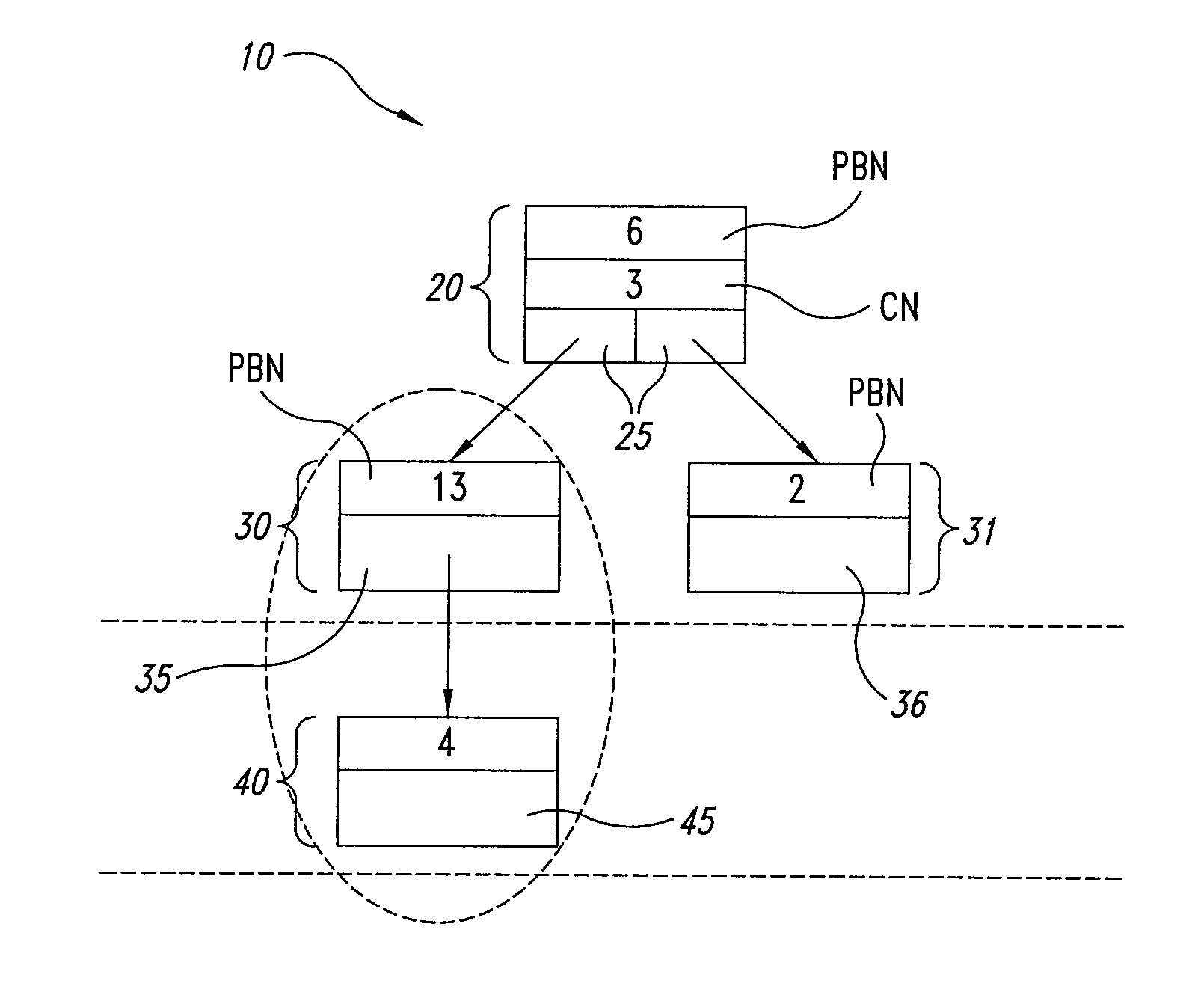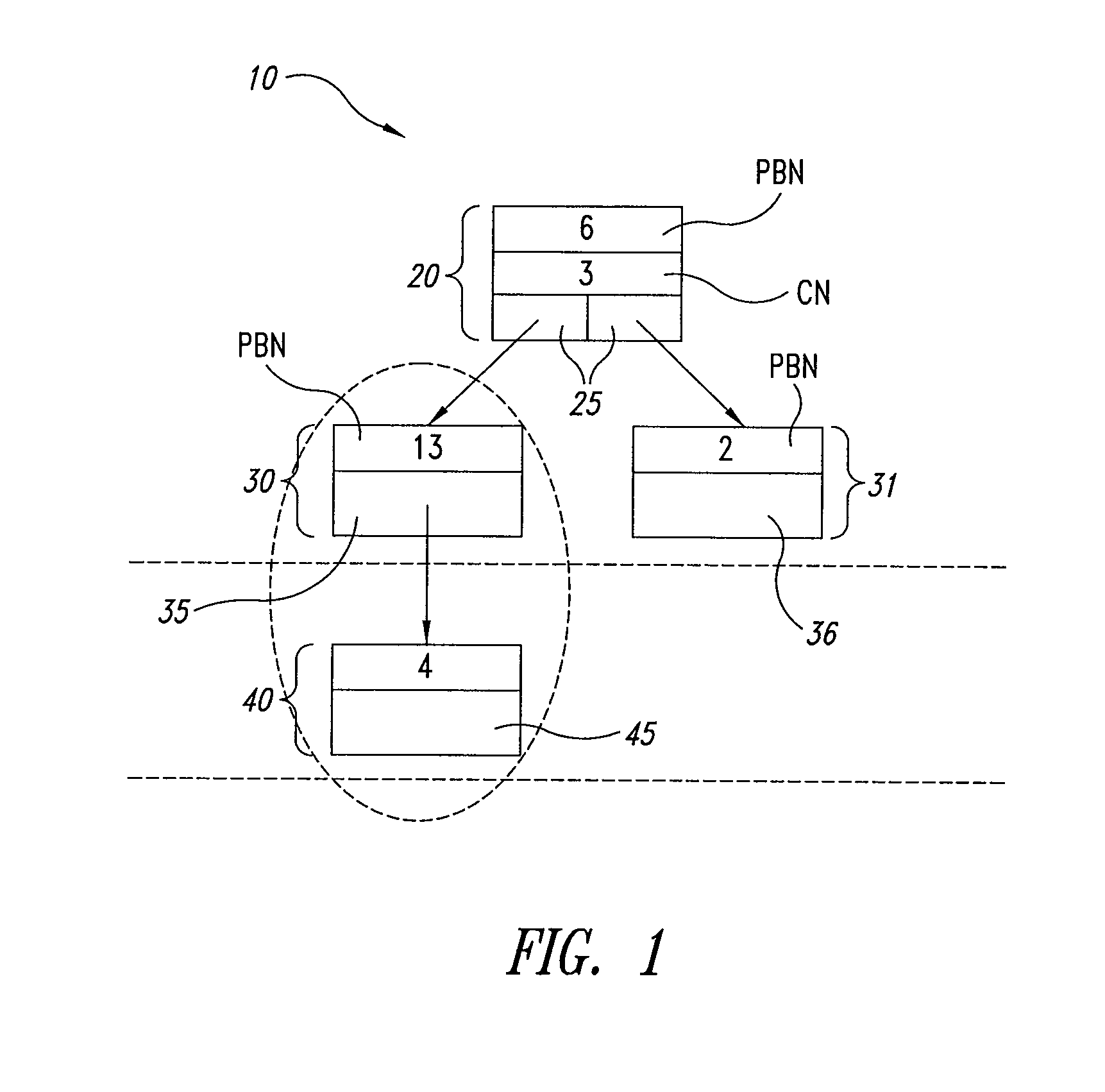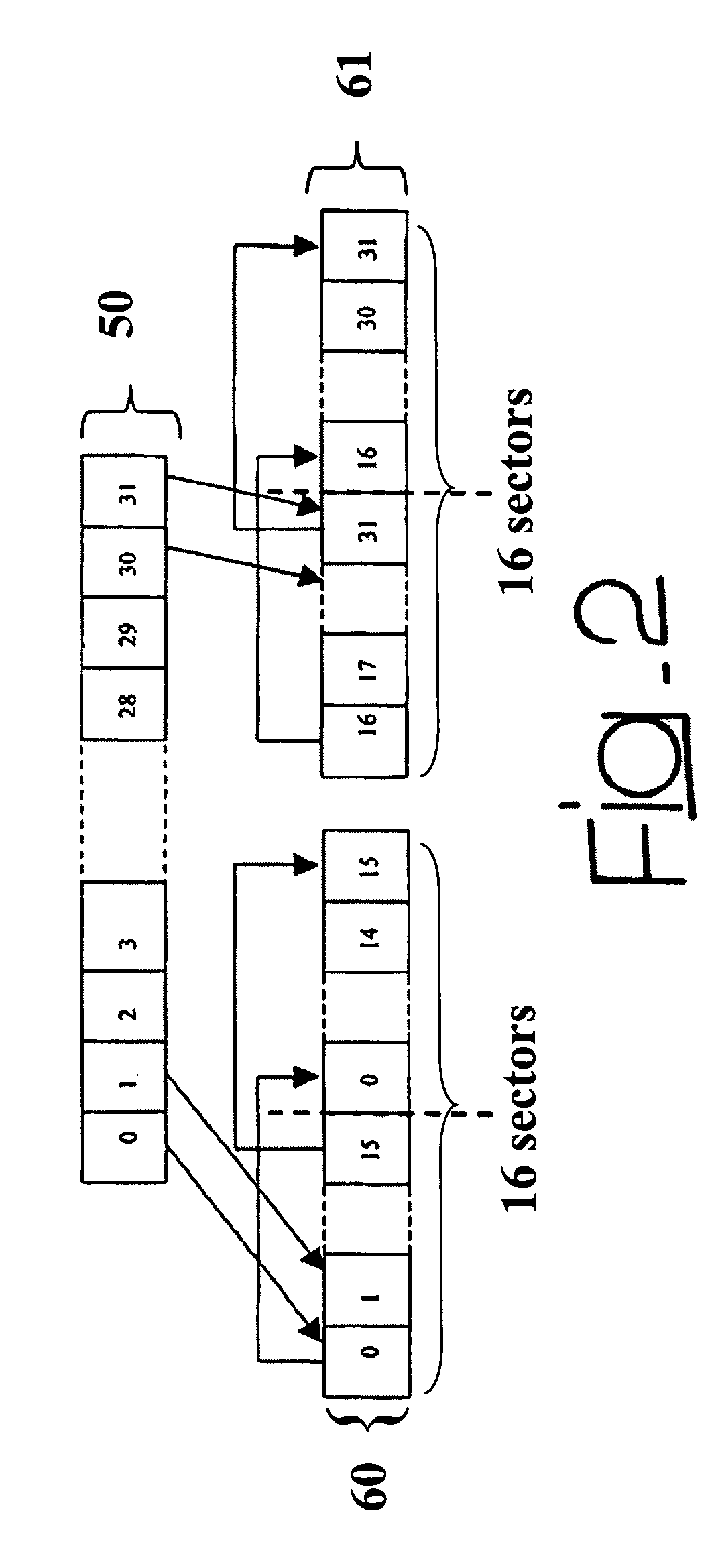Controlling operation of flash memories
a technology for controlling the operation of flash memory and memory devices, applied in the direction of instruments, computing, electric digital data processing, etc., can solve the problems of adversely affecting the read/write throughput, the possibility of ascertaining, and the inability to ascertain
- Summary
- Abstract
- Description
- Claims
- Application Information
AI Technical Summary
Benefits of technology
Problems solved by technology
Method used
Image
Examples
Embodiment Construction
[0037]The solution described herein is based on the use of a virtual-to-physical mapping table. The virtual-to-physical mapping table stores, for each entry, a pointer to a tree structure instead of a physical block number. Each tree structure links logically a set of physical blocks in the flash device. All the physical blocks indicated in the tree data structure refer to the same virtual block.
[0038]The solution described-herein stores information used to link the blocks that are part of the tree data structure. Such information is stored in spare area of the first page of each block of the tree.
[0039]Additionally, the solution permits to write updates of a page in a different position of the same physical block. In particular, the solution writes the new version of a page in a defined position that can be calculated starting from page position in a virtual block. Therefore no need exists of reading the spare area of any pages to learn the new position of a page.
[0040]This feature...
PUM
 Login to View More
Login to View More Abstract
Description
Claims
Application Information
 Login to View More
Login to View More - R&D
- Intellectual Property
- Life Sciences
- Materials
- Tech Scout
- Unparalleled Data Quality
- Higher Quality Content
- 60% Fewer Hallucinations
Browse by: Latest US Patents, China's latest patents, Technical Efficacy Thesaurus, Application Domain, Technology Topic, Popular Technical Reports.
© 2025 PatSnap. All rights reserved.Legal|Privacy policy|Modern Slavery Act Transparency Statement|Sitemap|About US| Contact US: help@patsnap.com



